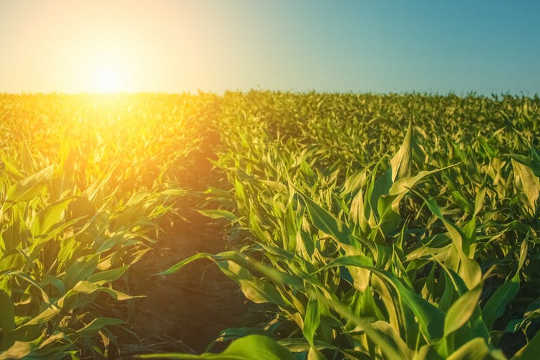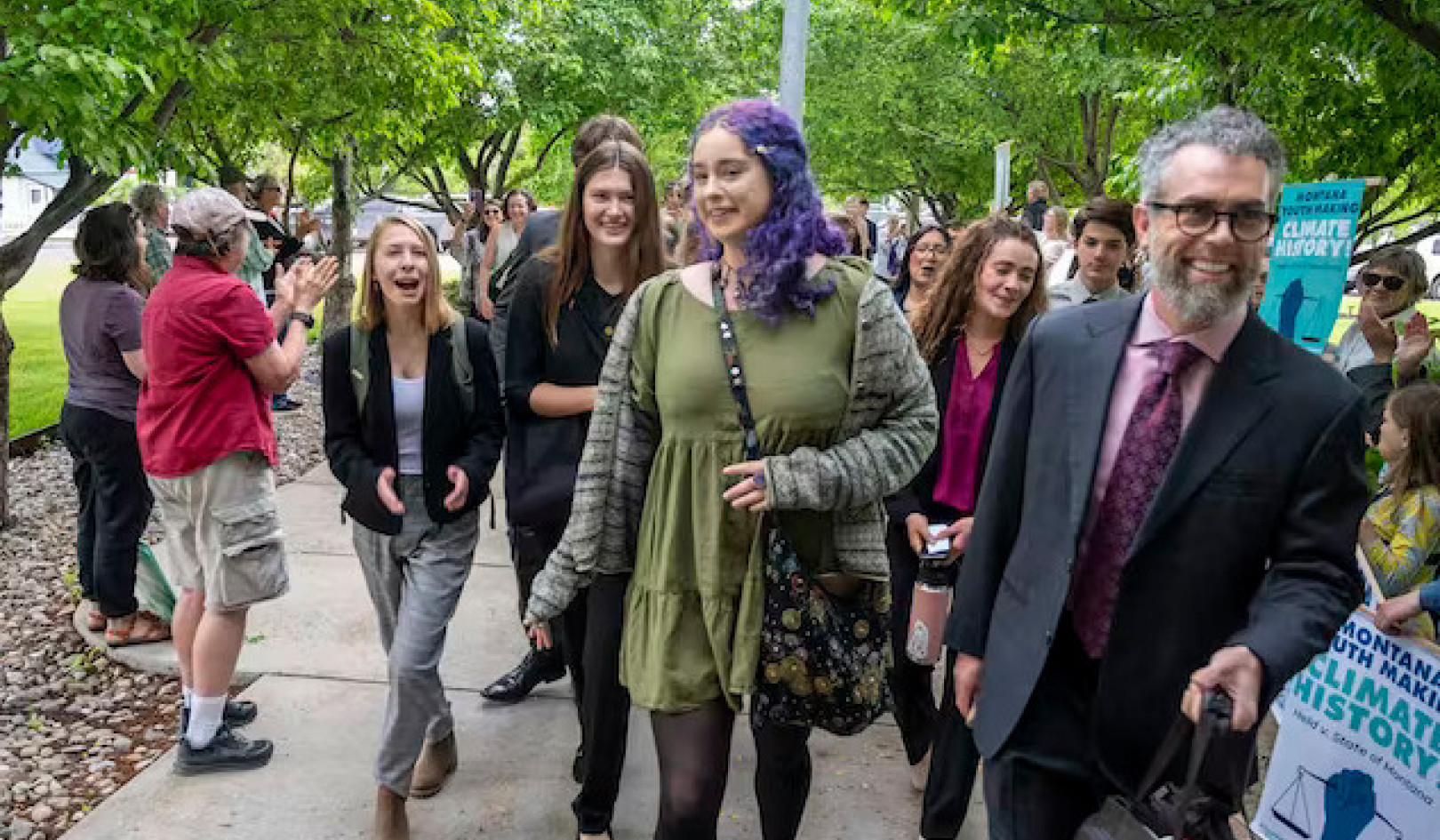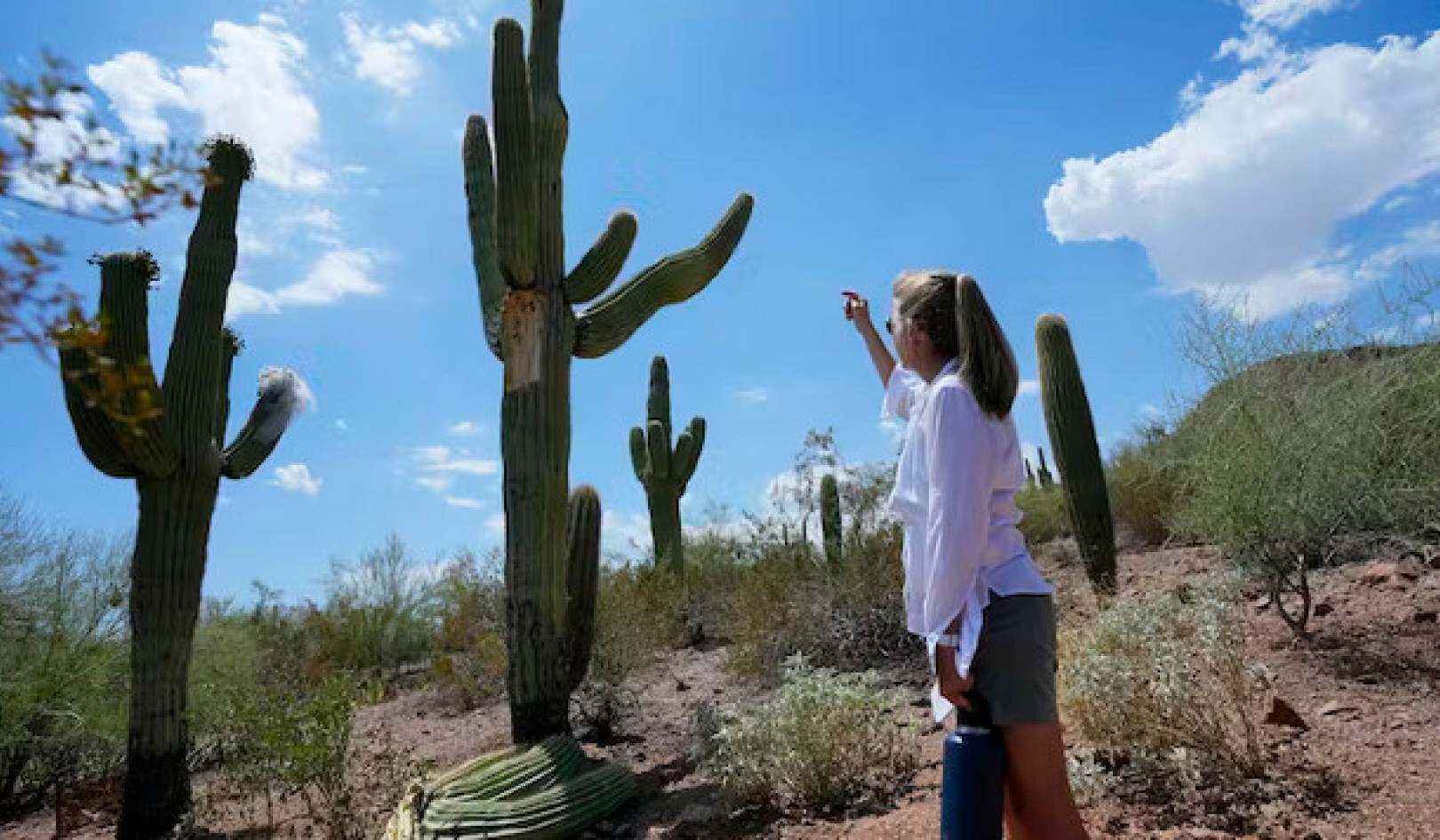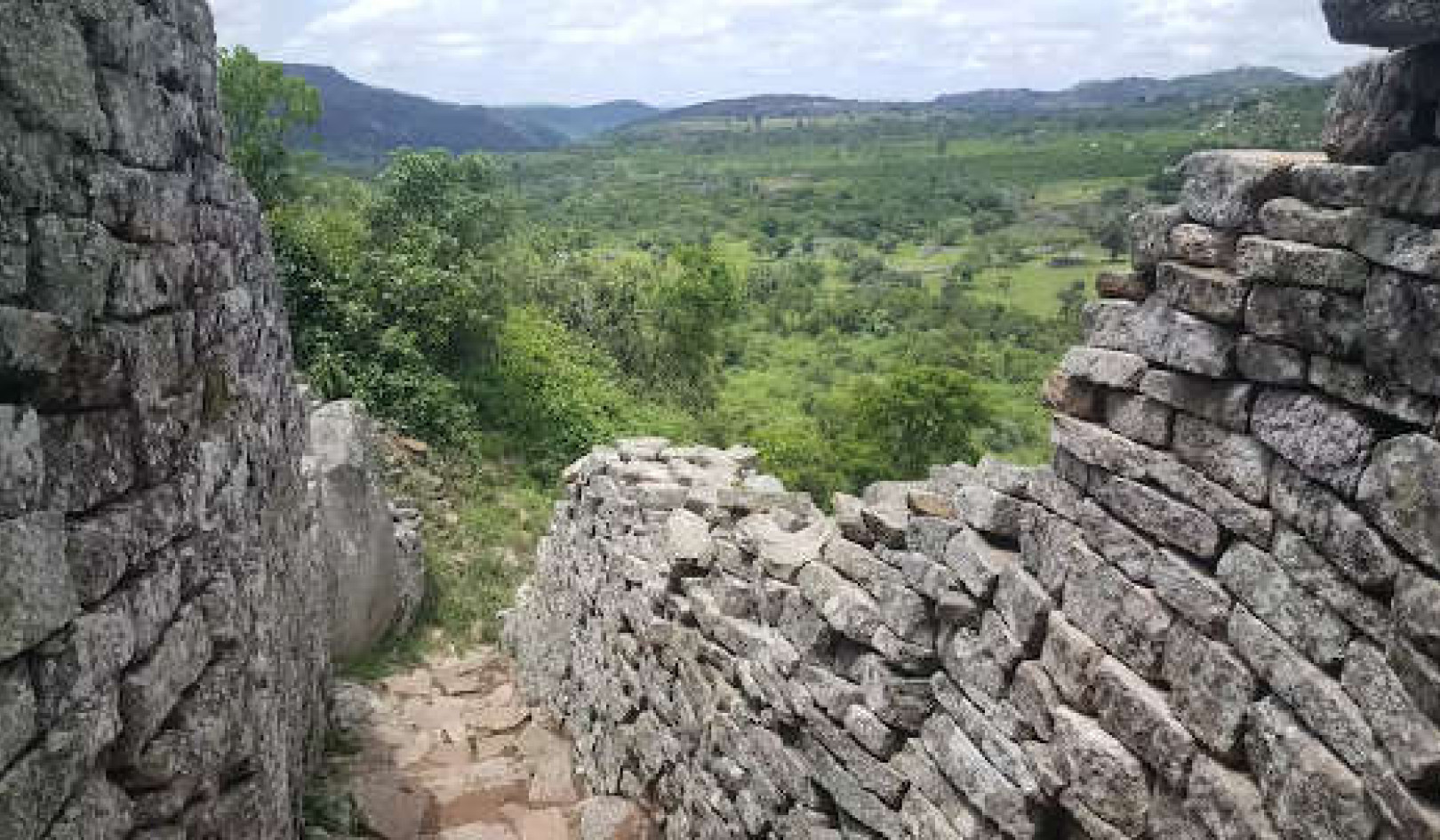Planten zijn een onwaarschijnlijk onderwerp van politiek debat geworden. Veel projecties suggereren dat het verbranden van fossiele brandstoffen en de daaruit voortvloeiende klimaatverandering het moeilijker zullen maken om voldoende voedsel te produceren voor iedereen in de komende decennia. Maar sommige groepen verzetten zich tegen het beperken van onze uitstoot beweer dat higher levels of carbon dioxide (CO?) will boost plants’ photosynthesis and so increase food production.
Nieuw onderzoek gepubliceerd in Science suggests that predicting the effects of increasing CO? levels on plant growth may actually be more complicated than anyone had expected.
To understand what the researchers have found out requires a bit of background information about photosynthesis. This is the process that uses light energy to power the conversion of CO? into the sugars that fuel plant growth and ultimately provide the food we depend on. Unfortunately, photosynthesis is flawed.
Molecules of CO? and oxygen are similar shapes and the key mechanism that harvests CO?, an enzyme with the catchy name of RuBisCO, sometimes mistakes an oxygen molecule for one of CO?. Dit was geen probleem toen RuBisCO voor het eerst was geëvolueerd. But about 30m years ago CO? levels in the atmosphere dropped to less than een derde van wat ze waren geweest. With less CO? around, plants began mistakenly trying to harvest oxygen molecules more often. Today this is often a substantial drain upon a plant’s energy and resources.
As it gets hotter, RuBisCO becomes even more prone to errors. Water also evaporates faster, forcing plants to take measures to avoid drying out. Unfortunately, stopping water getting out of their leaves also stops CO? getting in and, as RuBisCO becomes starved of CO?, it wastes more and more of the plant’s resources by using oxygen instead. At 25°C, this can consume one-quarter of what the plant produces – and the problem becomes more extreme als de temperaturen verder stijgen.
Sommige echter fabrieken ontwikkelden een manier om het probleem te voorkomen by pumping CO? to the cells where the RuBisCO is located to turbocharge photosynthesis. These are known as C4 plants, as opposed to normal C3 plants which can’t do this. C4 plants can be much more productive, especially under hot and dry conditions. They came to dominate Earth’s tropical grasslands from 5m tot 10m jaar geleden, waarschijnlijk omdat de wereld op dit moment droger werd en de hunne watergebruik is efficiënter.
Maïs (maïs) en suikerriet zijn C4-planten, maar de meeste gewassen zijn dat niet, hoewel een project dat aanvankelijk werd gefinancierd door de Bill en Melinda Gates Foundation, de opbrengst van rijst wilde verbeteren door er C4-machines aan toevoegen.
De meeste modellen van hoe plantengroei en gewas opbrengsten will be affected by the CO? released by burning fossil fuels have assumed that regular C3 plants may perform better. Meanwhile, the RuBisCO in C4 plants already gets enough CO? and so increases should have little effect on them. This has been supported by eerdere kortetermijnstudies.
Het nieuwe Science paper rapporteert gegevens van een project dat de C3- en C4-fabrieken heeft vergeleken voor de afgelopen 20 jaar. Their findings are surprising. As was expected, for the first ten years, C3 grasses grown under extra CO? did better – but their C4 equivalents did not. However, in the second decade of the experiment the situation reversed, with the C3 plants producing less biomass under higher levels of CO? and the C4 plants producing more.
Het lijkt erop dat dit verbijsterende resultaat misschien is dat in de loop van de tijd er was minder stikstof beschikbaar om de groei van planten in de C3-plots en meer te bevruchten in de C4-plots. Het effect was dus niet alleen te wijten aan de planten zelf, maar ook aan hun interacties met de chemie van de bodem en zijn microben.
These results suggest that the way that changes in CO? affect established ecosystems are likely to be complex and hard to predict. They may hint that, as CO? in the atmosphere increases, C4 tropical grasslands could perhaps meer koolstof opnemen dan verwacht, en bossen, die overwegend C3 zijn, kan minder absorberen. Maar het exacte beeld hangt waarschijnlijk af van de plaatselijke omstandigheden.
Gevolgen voor voedsel
Wat dit betekent voor de voedselproductie kan eenvoudiger en minder geruststellend zijn dan op het eerste gezicht. Deze resultaten zijn van grassen die overleven en jaar na jaar blijven groeien. Maar de huidige graangewassen zijn "eenjarige planten" die na één seizoen doodgaan en moeten worden herplant.
As a result, they don’t have the opportunity to build up the soil interactions that seem to have boosted growth of the C4 plants in the experiment. We can’t expect that our food security problems will be solved by C4 crop yields increasing in response to CO? as they did in the experiment. Similarly, the eventual fall in biomass seen in the C3 plots shouldn’t happen in C3 annual crops.
But, as we know, C3 plants waste a lot more resources at higher temperatures, so any increase in photosynthesis from rising CO? levels seems likely to be in ieder geval geannuleerd Door de effecten van de opwarming van de aarde het zal veroorzaken. En dat is zonder rekening te houden met veranderingen in neerslagpatronen zoals meer frequente droogtes. Solutions that seem to be too good to be true generally are – and, for the moment, that still seems to be the case for the idea that CO? enhanced crop yields will feed the world.
Over de auteur
Stuart Thompson, Senior Lecturer in Plant Biochemistry, University of Westminster
Dit artikel is oorspronkelijk gepubliceerd op The Conversation. Lees de originele artikel.
Verwante Boeken
at InnerSelf Market en Amazon
























